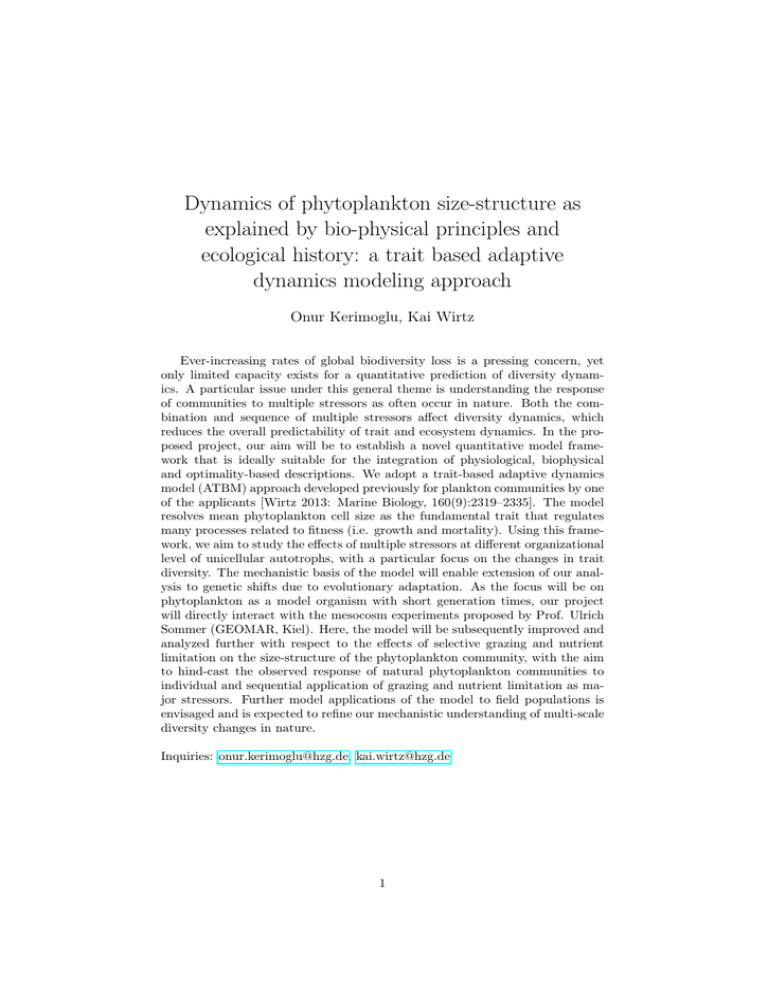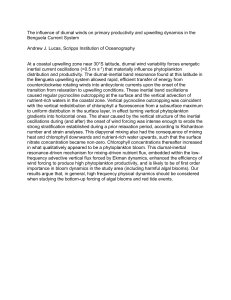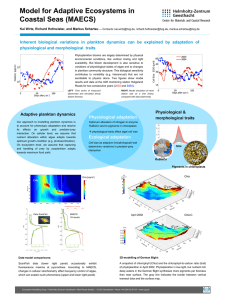Dynamics of phytoplankton size-structure as explained by bio-physical principles and
advertisement

Dynamics of phytoplankton size-structure as explained by bio-physical principles and ecological history: a trait based adaptive dynamics modeling approach Onur Kerimoglu, Kai Wirtz Ever-increasing rates of global biodiversity loss is a pressing concern, yet only limited capacity exists for a quantitative prediction of diversity dynamics. A particular issue under this general theme is understanding the response of communities to multiple stressors as often occur in nature. Both the combination and sequence of multiple stressors affect diversity dynamics, which reduces the overall predictability of trait and ecosystem dynamics. In the proposed project, our aim will be to establish a novel quantitative model framework that is ideally suitable for the integration of physiological, biophysical and optimality-based descriptions. We adopt a trait-based adaptive dynamics model (ATBM) approach developed previously for plankton communities by one of the applicants [Wirtz 2013: Marine Biology, 160(9):2319–2335]. The model resolves mean phytoplankton cell size as the fundamental trait that regulates many processes related to fitness (i.e. growth and mortality). Using this framework, we aim to study the effects of multiple stressors at different organizational level of unicellular autotrophs, with a particular focus on the changes in trait diversity. The mechanistic basis of the model will enable extension of our analysis to genetic shifts due to evolutionary adaptation. As the focus will be on phytoplankton as a model organism with short generation times, our project will directly interact with the mesocosm experiments proposed by Prof. Ulrich Sommer (GEOMAR, Kiel). Here, the model will be subsequently improved and analyzed further with respect to the effects of selective grazing and nutrient limitation on the size-structure of the phytoplankton community, with the aim to hind-cast the observed response of natural phytoplankton communities to individual and sequential application of grazing and nutrient limitation as major stressors. Further model applications of the model to field populations is envisaged and is expected to refine our mechanistic understanding of multi-scale diversity changes in nature. Inquiries: onur.kerimoglu@hzg.de, kai.wirtz@hzg.de 1



